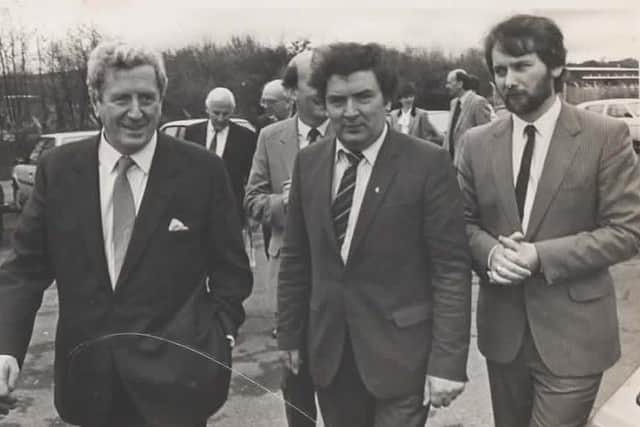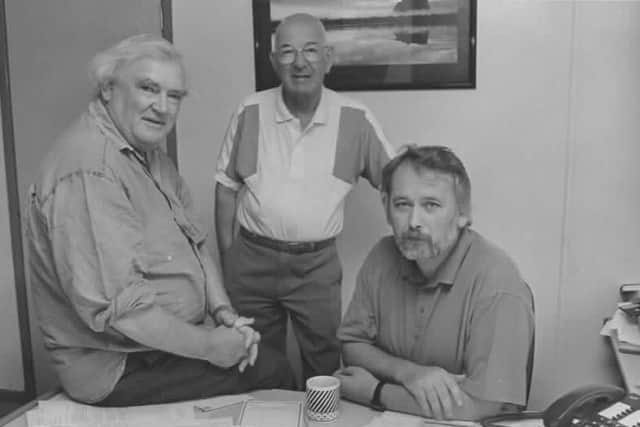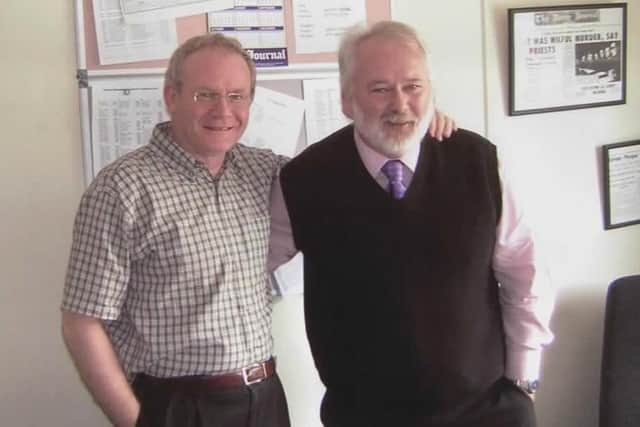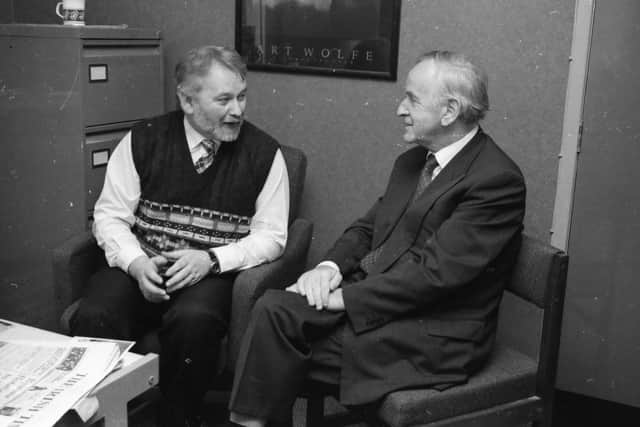Derry Journal 250: It was a unique time in a unique place
and live on Freeview channel 276
Looking back I realise now it was a time and a place that was unique, a time and a place where John Hume, Martin McGuinness and Bishop Edward Daly bestrode the landscape like giants. I doubt I would get too many out there to dispute the assertion we shall not see their likes again.
How I even ended up as editor is a strange story in itself.
Advertisement
Hide AdAdvertisement
Hide AdI had only been working with RTE in Dublin for less than a year when I came back up to Inishowen to attend a family celebration and I happened to run into the Journal’s legendary chief photographer, Larry Doherty, who was covering the event.


We had a quick conversation where Larry explained that the paper was on the look out for a senior figure for the newsroom, and would I be interested.
To cut to the chase, I was sitting in the press gallery in Dail Eireann some months later when one of the Oireachtas staff came to me and said, “There’s a guy from the Derry Journal looking to talk to you.” The rest, as they say, is history.
I was 27 years old, just turned 28 when I took on the editor’s job. Not only was I younger than most of the key staff and management, I was also a Donegal man with no track record in covering the Troubles.
Advertisement
Hide AdAdvertisement
Hide AdIn many ways It was a risky appointment both for the McCarroll family, who owned the Journal, and for myself in that I was leaving a safe, pensionable job with the national broadcaster to come as an untried editor to a well-established paper. I could, believe me, have messed up big time no bother.


And talk about being thrown in at the deep end. Not only I had never edited any paper before – the technical end can be intimidating – but I hardly knew the names of key Journal staff when on the Saturday before my first time in the chair the IRA shot dead Queen’s University law lecturer and Ulster Unionist hardliner, Edgar Graham. Mayhem ensued.
On the Monday I was feverishly trying to find a strong local angle when the then mayor, SDLP man Joe Fegan rang me and gave a great interview condemning the fact that loyalists had blocked off the Craigavon Bridge – then the only bridge across the Foyle - with the help of RUC personnel who made no attempt to act impartially. There was total gridlock.
Joe’s strong words of condemnation about both the killing and its aftermath made for a fabulous lead story. I was on my way.
Advertisement
Hide AdAdvertisement
Hide AdOver the next 25 years I was to live through IRA killings, sectarian murders by loyalists, the Anglo Irish Agreement, the peace process, the IRA ceasefire, the Good Friday Agreement and eventually the first cross-community Assembly with Trimble and Mallon at the helm. Historic times and historic events.


As editor, as I indicated earlier, I soon realised the Journal was not just another wee provincial paper, that its reach and importance went far beyond Derry.
One morning I got a frantic phone call from a press officer in the Northern Ireland office in Belfast wanting to know what the lead story that morning was because his minister, Tory MP Richard Needham, was going bananas about it. The guy was in a total panic.
And I recall too an American embassy official getting in a tizzy trying to set up a meeting with a guy from Washington. I wondered what the urgency was. I only learned much, much later that he was a spook from the CIA and they were checking out whether to give Martin McGuinness and Gerry Adams visas to visit America.
Advertisement
Hide AdAdvertisement
Hide AdOne thing I look back at with particular pride is that during my time as editor the Journal provided the grounding for some truly wonderful journalists many of whom later went on to become household names locally including the BBC’s Martin McGinley, Keiron Tourish, Paul McCauley, Dessie McCallion, Garbhan Downey and Joe Doran, UTV’s Mark McFadden, the Irish Times’ Freya McClements and many, many others. It was pleasing to see so many of them do well for themselves.


And, of course, two reporters who never saw the need to move on but were local legends - Domhnall MacDermott and Siobhan McEleney (nee Quinn).
Fate played a big part in their lives. Both did interviews on the same day for a single reporting position, both got a letter on the same day offering them a job, both were outstanding journalists, and both died way, way too young. I often think of them.
Finally, I suppose looking back I would have to say the Troubles did totally over-shadow my entire editorship. And I am not going to gloss over it and say they were the good old days – they weren’t. They were tough, they were demanding and many were the nights I lay awake into the wee small hours worrying.
But here’s the thing: Would I do it all again?
Absolutely, in a heartbeat….